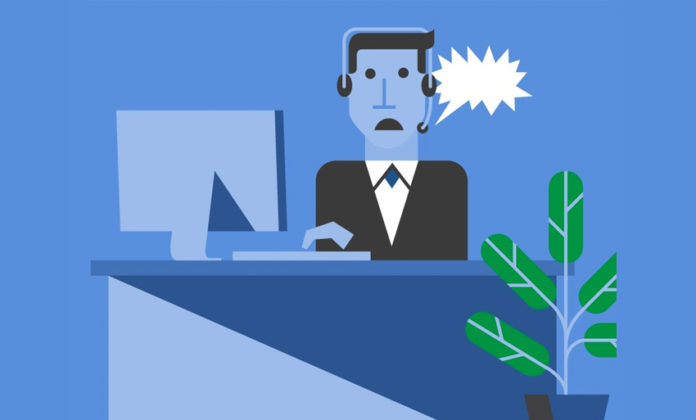As much as a positive customer service call can turn a casual customer into a loyal one, a mistake-ridden service call can lose a customer for life. According to Brian Solis, principal analyst at Silicon Valley’s Altimeter Group, the customer experience is becoming more important than the product itself. This makes the quality of the calls all the more vital.
Consider the opinion of Paul Greenberg, author of CRM at the Speed of Light and President of the 56 Group, “If a customer likes you and continues to like you, they will do business with you. If they don’t, they won’t.” According to TechTarget, current customer relationship management (CRM) technology uses metrics to measure call center staff effectiveness. Call center staff can be overwhelmed with the influx of customer communication in the form of telephone calls, social media, instant messaging, and email. With so many daily connects with customers, mistakes are inevitable. But awareness of them up front can help minimize the errors and maximize the customer experience.
The Importance of a Positive Customer Experience
Zendesk commissioned Dimensional Research to conduct a study on the long-term effects of poor customer service. Over one thousand individuals from a range of ages and incomes were asked to complete an online survey on their customer experiences with mid-sized companies in the U.S. The results showed that almost 80 percent of high-income households will avoid a company for two years after a bad customer experience. Moreover, customers are more likely to remember a bad experience than a good experience and to share that poor experience with others.
Another survey by PH Media Group asked over 2,000 individuals their opinion of customer service calls, specifically on the need for audio branding while customers are on hold. According to the survey, over 70 percent of respondents said that after a disappointing first call to a customer service representative, they would not buy from that company again.
Given that an effective customer service call is so important to retaining customers and building loyalty, here are five mistakes often made on customer service calls and quick fixes to prevent them from becoming habit.
1. Force The Customer to Play a “Create Your Own Adventure” Game
Voice Recording: Press 1 for questions regarding your recent order. Press 2 for questions on billing.
Customer: Representative!
Voice Recording: Press 3 for questions on deliveries. Please press 4 for questions regarding our website.
Customer: REPRESENTATIVE!
Voice Recording: Please press 5 for technical issues. Say “Representative” if you would like to speak to a representative.
Customer: Representative!
Voice Recording: I am sorry. Due to call volume, a representative is not available at this time. Please press 1 for questions regarding your recent order. Please press 2 for…
Introducing instant messaging or, even better, using an IM app on your website’s “Contact Us” page can better meet the needs of today’s customers. An article in Entrepreneur illustrates the demand for mobile messaging apps; 90 percent of Brazilians, 75 percent of Russians, and 50 percent of UK nationals habitually use mobile messaging apps. These apps prevent exhausting automated voice systems and disconnections.
Statistics from Telephone on Hold show that executives spend 15 minutes a day or 60 hours per year on hold waiting for customer service. After holding for an average of 1 minute and 55 seconds most callers hang up, and 34 percent will not call back. Direct lines to representatives can avoid hold times, as can the provision of texting or using Twitter to respond to customer service queries.
According to Social Times, in 2013, 99 percent of brands were active on Twitter, and 30 percent had a dedicated customer service team. The average response time was approximately five hours. JetBlue has stand-out customer service using @JetBlue. The company was ranked number one in customer service among top US airlines in 2014 and 2015.
2. Refuse to Appear Apologetic
Customer: Hello, I’m having a problem with the directions for operating product A. I’ve checked the website, but that hasn’t helped me either.
Representative: So, you’ve followed the directions? Did you try step 3 a few times before moving to step 4? Most people miss that, but it is written in the instructions…
A representative that does not validate a customer issue is suffering from a major CX mistake: not actively listening. Customer service professionals should actively repeat the issue the customer is having before attempting to answer themselves. In addition, failing to apologize for an inconvenience (whether it is the company’s fault or not) is another big mistake: according to the Harvard Business Review, some companies harbor a culture of not apologizing because they fear litigation if they admit that they have made a mistake. But rather than focusing on the legal aspects or the blame game, companies would do better to show empathy.
How big is an apology? The Carey School of Business found that 37 percent of customers were satisfied with service recovery when offered a refund or credit, but when an apology was added in addition to the credit or refund, satisfaction doubled to 74 percent.
3. Requesting Redundant Information
Customer: Hello. I would like to talk to someone about changing a ticket that I have booked using air miles.
Representative: I can help you with that. What is your first and last name? Air miles account number? Original booking number?
**Customer tirelessly answers all of the questions**
Representative: Let me connect you with someone who can help you with that. One moment please.
Customer: But I just wanted to–
Automated Voice: Thank you for holding. A representative will be with you shortly.
Representative #2: Hello, how can I help you today?
Customer: Like I told the person before, I just want to change a ticket I booked.
Representative #2: Certainly. First and last name please as well as your air miles account number….?
Nothing embodies inefficiency more than asking a customer to repeat information that they have already provided. In the case of airline rewards programs, customers have little choice but to remain loyal if they have accumulated substantial miles.
Call center CRM software tracks and records callers’ data. Customer service staff can quickly access a client’s history and spend time resolving issues instead of gathering redundant information. If the caller is dealt with efficiently, their impression of the firm will be one of efficiency. Failing to exploit CRM software is a major mistake.
4. Preventing Front Line Staff from “Going the Extra Mile”
Customer: Hello. My cable does not seem to be working properly. It keeps cutting out.
Representative. I’m sorry to hear that. I can schedule a technician to come out. The next available appointment I have is Thursday. The technician can be there between 10 am and 4 pm.
Customer: I can’t be here all day. I have to go to work. Can you give me an appointment so that I don’t have to be here all day?
Representative: I’m sorry. We can only give you a window of when the technician can come. It depends on the other calls that he has in the area on that day.
Employees need some freedom to make decisions when dealing with customers. Doing so allows them to respond more appropriately to the needs of the customer and to apply their instinct and creativity. Their efficiency in making timely decisions can eliminate the need for extensive damage control, such as managing negative word-of-mouth from a disgruntled caller.
In the case of the example, an effort by the representative to narrow the window for a visit and accommodate the customer would build good will. A strong, well-trained sales person knows when a certain recommendation is appropriate and can go the extra mile to reinforcing a customer’s positive perceptions.
The Ritz-Carlton hotel brand prides itself on customer service. The brand hires staff that “go the extra mile” and who can respond to unexpressed customer needs. For example, a room service waiter may place a breakfast tray on the desk as requested by the guest and, on the way out, may turn the TV toward the guests’ viewing direction. With respect to phone service, hotel employees will answer before three rings and always use the guest’s name.
5. Missing the Opportunity to Impress
Representative: Thank you again for being a loyal customer. Have a great day.
Customer: Good-bye.
Sounds like a perfectly good exit, right? Sure, if you’re not concerned about trying to grow your business. Customer service call employees should recognize loyal customers and inform them of the various benefits available to them. Research from Oracle shows that over 80 percent of consumers are willing to pay more for an upgraded experience, particularly if they are already loyal customers. A customer who selects an upgraded service that they were initially unaware is subject to a mutually beneficial relationship. The customer gets a sweet upgrade, and the company gets a sale.
Customer experiences are intangible, but they are often valued more than a tangible product. Human emotions often choose the irrational over the rational. According to the Huffington Post, research by Kolsky and thinkJar found that 66 percent of consumers who changed brands did so because they experienced poor service, not because the product was of poor quality.
Investing in technology that can provide a place for conversation with your customers is the core of a long-lasting relationship. Data collected on the “digital customer experience” can identify mistakes made on customer service calls.
No matter how great your product, the customer experience can be the deciding factor. Don’t ignore the quality of your customer service calls. As Solis says, “Humanity is the Killer App.”




